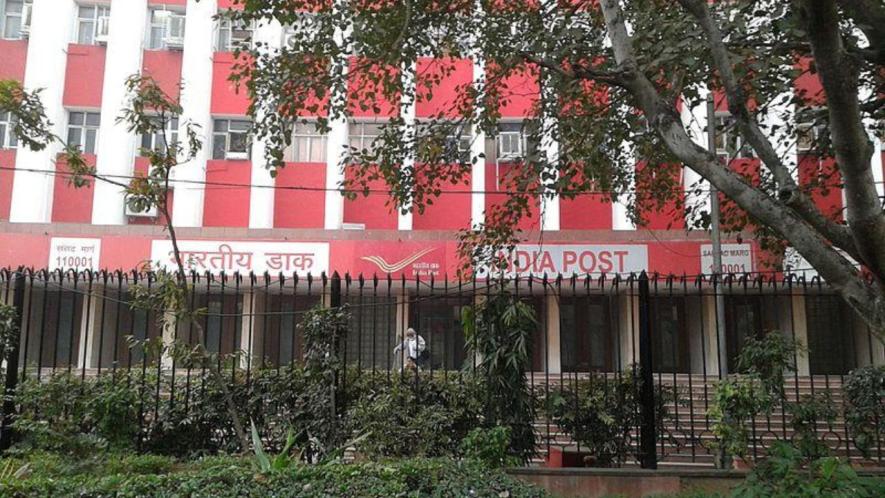DIGIPIN: India’s Next Big Leap in Addressing & Postal System

Representational image. Image courtesy: Wikimedia Commons
India’s postal system has long been the foundation of communication and logistics, evolving from traditional mail services to digital advancements. The recent introduction of DIGIPIN (Digital Postal Index Number) marks a transformative leap in address identification. Developed by the Department of Posts in collaboration with IIT Hyderabad and ISRO’s National Remote Sensing Centre, DIGIPIN replaces the conventional six-digit PIN codes with a precise 10-character alphanumeric identifier, enabling more accurate location mapping and enhanced usability across services.
India's postal system has a rich and fascinating history, dating back to ancient times when messages were delivered by foot runners and horseback couriers. During the Maurya Empire (321–185 BCE), Emperor Chandragupta Maurya established a State-run postal network primarily for administrative communication. Later, under the Mughal Empire, postal services expanded with the use of dak chowkis (relay stations) to ensure efficient message delivery.
The modern postal system was formally established in 1854 under British rule, marking a significant transformation in India's communication infrastructure. This period saw the introduction of standardised postage rates, the issuance of India's first postage stamp, the Scinde Dawk, and the expansion of a nationwide postal network that connected major cities and towns.
As India's population grew and urbanisation accelerated, addressing systems became increasingly complex, leading to inefficiencies in mail delivery. Before structured postal codes, sorting and delivering mail was time consuming and prone to errors, especially in densely populated cities and remote regions.
To address these challenges, the Postal Index Number (PIN) system was introduced on August 15, 1972 by Shriram Bhikaji Velankar, then Additional Secretary in the Union Ministry of Communications. This system divided India into nine postal zones, including one functional zone dedicated to the Indian Army, to facilitate efficient sorting and delivery.
Each six-digit PIN code represents a specific geographical region, ensuring that letters and parcels reach their destinations faster and with greater accuracy. The first digit indicates the broader region, the second represents the sub-region, the third corresponds to the sorting district, and the last three digits specify the exact post office location.
The implementation of the PIN system streamlined postal operations, significantly reducing errors caused by ambiguous or incomplete addresses. It also laid the foundation for a more structured national postal network, enabling better logistics, reduced delays, and improved mail tracking. Over the decades, as technology advanced, India Post embraced digital transformation, integrating:
1. Electronic money transfers, allowing people to send and receive funds securely.
2. E-commerce logistics, supporting the growing online retail sector by enabling faster parcel delivery.
3. Digital tracking systems, offering real-time updates on deliveries, increasing transparency and reliability.
Despite advancements in addressing systems, traditional formats still struggle to accurately identify locations in informal settlements, remote rural areas, and regions with non-standardised address conventions. These limitations create significant challenges in logistics, last-mile delivery, and emergency response efforts, often delaying critical services and reducing overall efficiency.
To address this issue, the Department of Posts, in collaboration with IIT Hyderabad and ISRO’s National Remote Sensing Centre, developed DIGIPIN. This is a geo-coded, grid-based digital address system that assigns a unique 10-character alphanumeric code to every 4m x 4m grid across India, ensuring accurate location identification. This system is open-source, allowing seamless integration into government and private sector workflows, and supports offline use, making it particularly beneficial for areas with limited connectivity.
DIGIPIN is set to transform India’s addressing and postal system by providing exceptional accuracy in location identification. By eliminating confusion caused by similar sounding addresses, it ensures precise mapping, significantly enhancing logistics, last-mile delivery, and efficiency in e-commerce and postal services.
Beyond logistics, DIGIPIN plays a crucial role in emergency response, enabling law enforcement, medical, and fire services to quickly locate individuals even in areas without formal addresses. Its impact is particularly vital in rural and remote regions, where traditional addressing systems are often inadequate. By offering precise location identification in informal settlements, it promotes accessibility and inclusivity.
A defining advantage is privacy and security, as DIGIPIN does not store personal data, allowing users to share location details without compromising sensitive information. Moreover, its integration with GIS (Geographic Information System) and smart governance strengthens digital infrastructure, enhancing government service delivery and urban planning. By addressing inefficiencies in conventional addressing, DIGIPIN is poised to modernise India’s postal and location-based systems, making them more precise, efficient, and accessible.
Some Challenges
Despite its potential to transform India's addressing system, several challenges must be overcome for successful nationwide implementation of DIGIPIN. One of the primary concerns is awareness and adoption, as many citizens may be unfamiliar with the system, requiring extensive informational campaigns to ensure widespread use. Technological barriers also pose a challenge, as DIGIPIN relies on Global Navigation Satellite System-enabled devices, which may not be readily accessible in areas with limited digital infrastructure.
Compatibility with existing systems presents another hurdle, as integrating DIGIPIN with legacy postal databases requires substantial restructuring and workflow adjustments.
Additionally, its open-source nature raises concerns about potential misuse, including unauthorised access or exploitation of location data. Financial investment is another critical factor, as nationwide deployment demands significant resources for infrastructure, training, and operational logistics. Overcoming these challenges will be key to establishing DIGIPIN as a transformative solution, ensuring a more efficient, secure, and inclusive postal network across India.
Traditional address formats have long struggled to accommodate rapid urbanisation, informal settlements, and geographically diverse landscapes, leading to inefficiencies in logistics and emergency response. By introducing geospatially-anchored digital identifiers, DIGIPIN eliminates ambiguity, streamlining last-mile delivery, e-commerce logistics, and supply chain operations, thereby accelerating economic activity across urban and rural regions alike.
More than a logistical tool, DIGIPIN embodies a socio-technological intervention, empowering policymakers with data-driven insights for urban planning, disaster management, and governance through seamless integration with GIS.
Also, by dismantling barriers imposed by legacy systems, it heralds an era of spatial justice, operational fluidity, and infrastructural intelligence, setting a global precedent for nations seeking to leverage technology for enhanced connectivity and governance. Its adoption signifies not merely an administrative upgrade but a transformative shift toward a smarter, more inclusive, and technologically empowered India.
The writer is Assistant Professor, Department of Sociology, Maitreyi College, University of Delhi, and Executive Editor, Asian Ethnicity. The views are personal.
Get the latest reports & analysis with people's perspective on Protests, movements & deep analytical videos, discussions of the current affairs in your Telegram app. Subscribe to NewsClick's Telegram channel & get Real-Time updates on stories, as they get published on our website.


















